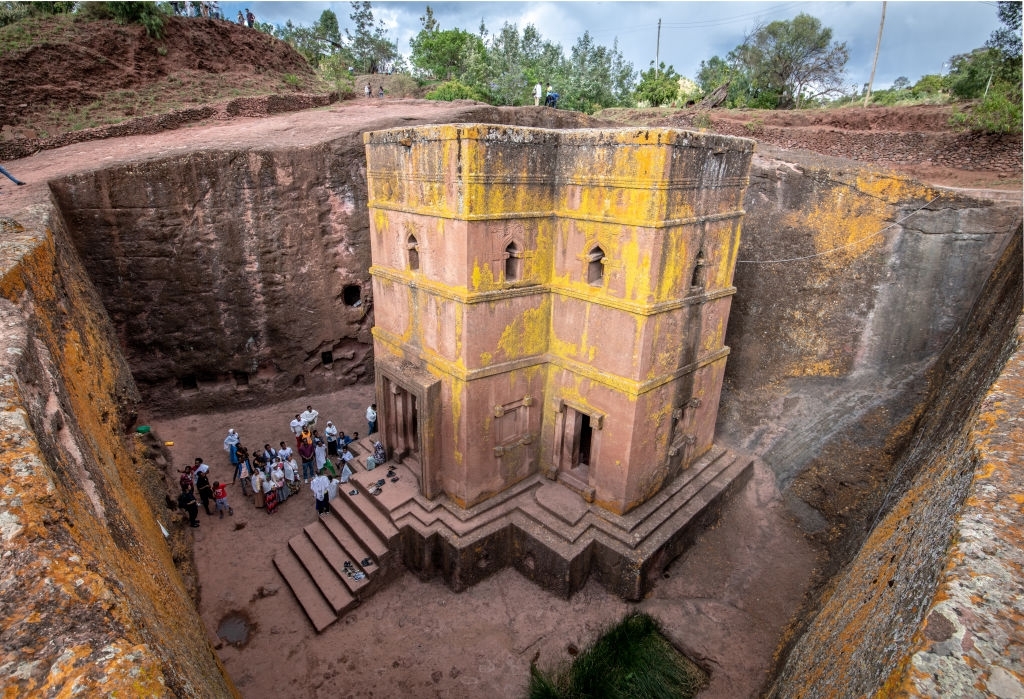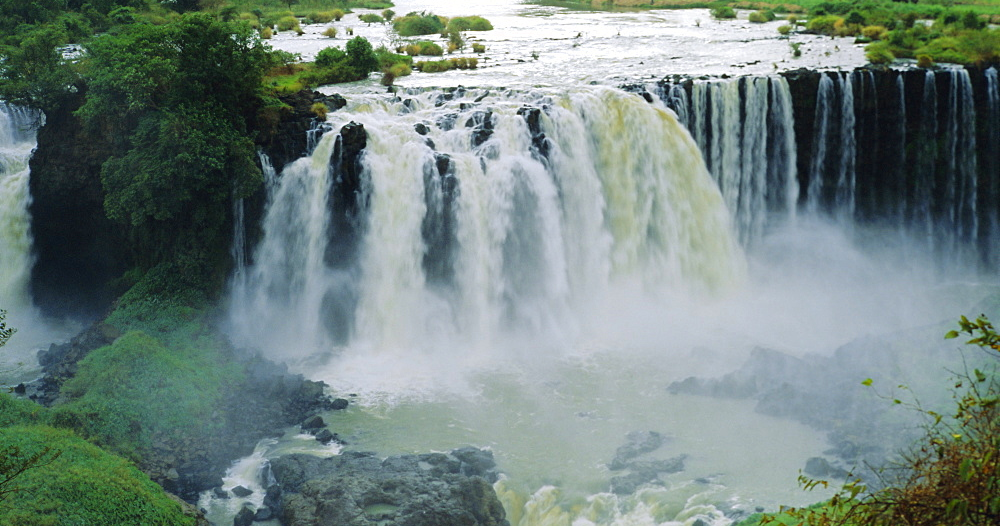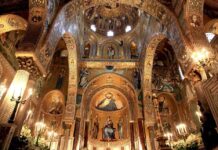Ethiopia is located in the African continent known as the dark continent. About 86 different tribes live in Ethiopia, which has an area of about 11 lakh square kilometers. Among them, the people who belong to the Oromo and Amhara tribes are the most in Ethiopia. The percentage of the Oromo tribe is recorded as 34.6%, while the percentage of the Amhara tribe is 27.1%.
In this way, many people are used to brand Ethiopia as a poor and destitute country where many tribal people live. There are many beautiful places around Ethiopia, which has a long history. From now on, I am going to tell you about the wonderful places that a tourist going to Ethiopia can see.
1) Old Town of Lalibela

In the year 1187, Muslims did not get a chance to worship the holy land due to the capture of Jerusalem. Therefore, King Lalibela built an underground city called “Lalibela” near the Jordan River in Ethiopia, similar to Jerusalem. It is located at an altitude of about 2600 meters in the Lasta Mountains. It is said that it took about 24 years to complete the construction of Lalibela. Accordingly, it is speculated that the work of this city may have been completed in the 13th century.

Several churches are found in the city which is built at a depth of 100 feet. Volcanic rocks have been used to build these beautiful churches. There is also a system of underground roads and hidden caves in the city. During that era, priests and people who worked in churches continued to live in underground churches. At that time, a significant number of devotees visited the churches daily for religious activities. Therefore, it is speculated that the city of Lalibela must have been full of devotees during that period.
In this way, the stone churches of Lalibela city, which were worshiped by devotees for a long time, became depopulated later. But the Ethiopian government realized the historical importance of Lalibela and worked to preserve it. Therefore, today Lalibela has become a tourist town. In 1978, UNESCO included Lalibela Underground City among the 12 World Heritage Sites for the first time.
2) Simian National Park

Simian National Park, established in 1969, is located in the Amhara region of northern Ethiopia. Located at a height of about 3600 meters above sea level, one can see rare species of animals such as Walia ibex goats, Ethiopian wolves and Gelada baboons.
Also, in this garden, you can see beautiful species of plants such as Erica, Lobelia, and species of grass unique to Ethiopia.

The beauty of this park is further enhanced by the Simian mountain range located there. The highest peak of the mountain range is Ras Dashen with a height of 4553 meters.
UNESCO decided to name it as a world heritage because rare animals and plants are also found in this national park where there are many beautiful places.
3) Blue Nile Falls

The Nile, which is considered to be the longest river in the world, is located in the African continent. The Nile, formed by the confluence of two rivers, the White Nile and the Blue Nile, flows for 6,650 km through 11 countries. The Blue Nile, which feeds the Nile, originates from Lake Tana in Ethiopia.
The river meets the White Nile near the city of Khartoum in Sudan. In this way, wonderful waterfalls have been created from the Blue Nile River that flows from Lake Tana to Khartoum. Among them, the most famous waterfall is the Blue Nile Falls.

Located about 30 kilometers from Lake Tana, Blue Nile Falls is one of the most beautiful places in Ethiopia. This waterfall with a height of 42 meters looks most beautiful during the good rains. During the rainy season, as the amount of water in the falls increases, when the water falls down the falls, smoke is created due to the dispersion of the water over a large distance.
Therefore, the native people of the country call this waterfall by the name of Great Smoke. The stone bridge below the Blue Nile falls is another tourist attraction. Built in 1626 by the order of Emperor Susinius, the bridge is considered to be the oldest stone bridge in Ethiopia.
4) Royal city of Gondar

In Ethiopia, which was ruled under various kings and queens for many centuries, there are still remains of royal eras. The ancient city of Gondar, located in the northern Ethiopian highlands, is such a place. King Fasil, who ruled Ethiopia in the 17th century, declared Gondar as the country’s permanent capital in 1636. After that, many royal palaces were built around this city.
Churches and buildings were created there using advanced architectural techniques. Debre Birhan Selassie is the most famous of the churches that were built in that way. The remains of the royal city of Gondar, where the Ethiopian royals used to live, remain today. Understanding the value of this wonderful city, UNESCO declared it as a cultural world heritage in 1979. Since then, it has been maintained under UNESCO
5) Yabelo National Park

Yabelo National Park is the best place for bird watching in Ethiopia. The national park is located in a protected zone in the Oromia region of southern Ethiopia, at an altitude of about 1700 meters above sea level.
A special type of organic red soil can be seen in this park. A savanna plant system is found here, and among these are plants of low timber value. The main national park in Ethiopia is home to many species of animals including birds.



